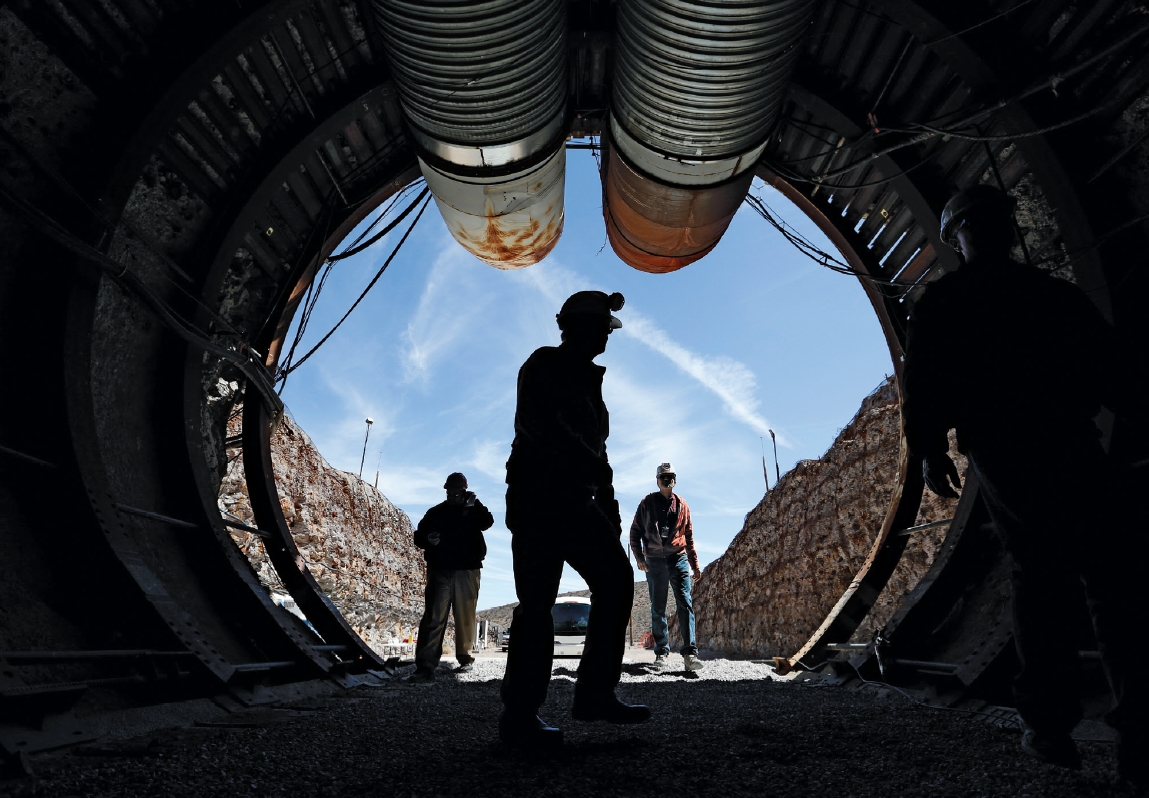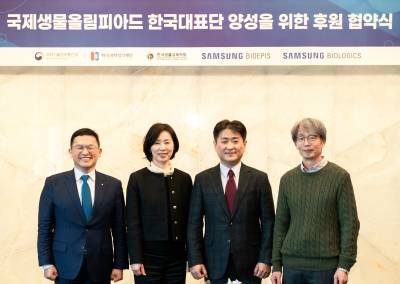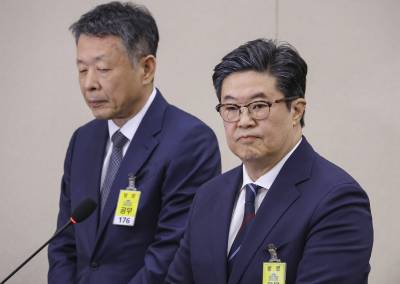- 핵연료 재활용에 서광

CALIFORNIUM DREAMING
Making nuclear fuel safer and more efficient by revisiting a Cold War–era discovery.We’re all familiar with the lighter elements of the periodic table—the noble gases and mainstay transition metals, such as iron and copper.
The real fun, however, is down at the bottom, among the heavy elements with strange names (einsteinium?) and dangerous radioactivity. The behavior, function and even appearance of many of these heavy metals is a total mystery. Some decay so quickly—a split second—that it’s surprising we know they exist at all.
One heavy metal is undergoing something of a renaissance. For years, californium—a radioactive element first synthesized by Cold War–era nuclear scientists at the University of California, Berkeley, who gave it its name—has been used mostly as a component in metal detectors. But Thomas Albrecht-Schmitt, a researcher at Florida State University, has discovered new properties of californium that may someday help the United States store and recycle its spent nuclear fuel. In experiments described last year and this month in Nature journals, Albrecht-Schmitt disproved common assumptions that there were technological limits and quirks in the way californium bonds with other elements, preventing scientists from manipulating it. The prevailing view was “you can’t monkey around with their chemical behavior,” he says. “We’ve shown that you can.”
“Californium’s chemistry is much more like a transition metal, like iron or tungsten or gold,” he says. “With transition metals, we have exquisite control over all their properties.” It turns out that one can bond californium with other elements, make it glow green like kryptonite and maybe even toy with its magnetism. Most important, scientists may be able to use it to extract reusable components of spent nuclear fuel, separating them like “oil on top of water,” he says.
Unlike in Europe, Russia and Japan, where spent uranium is processed and recycled, the 99 nuclear power plants in the U.S. are “using only a very small fraction of the available energy in the fuel, and then you’re throwing it away and burying it,” says heavy-metal scientist Kenneth E. Gregorich, of the Lawrence Berkeley National Laboratory. That’s partly because fresh uranium is still relatively inexpensive. But storage is risky and costly: the stuff is hot, both physically and radioactively. As Albrecht-Schmitt points out, “What happens if a natural or deliberate disaster occurs at a used fuel repository?”
Someday, the U.S. could join other countries in recycling nuclear fuel, reducing the amount that goes into storage and cutting the need for freshly mined uranium by 30 percent. If that’s to happen with californium, scientists will likely need to convince the energy industry that the benefits of recycling outweigh the initial price tag: the 5-milligram dab Albrecht-Schmitt used for his research cost $1.4 million.
핵연료 재활용에 서광
방사성 원소 캘리포늄은 전이금속에 가까워 화학작용 조작할 수 있어주기율표의 가벼운 원소들은 익히 알려졌다. 비활성 기체, 그리고 철과 구리 같은 주요 전이금속들이다.
그러나 진짜 흥미로운 부분은 그 아래쪽 희한한 이름(아인스타이늄)에 위험한 방사성을 가진 중원소(질량 수 80이상)들이다. 이들 중금속의 작용, 기능과 모양새까지 완전 미스터리다. 일부는 눈 깜짝할 새(몇 분의 1초) 소멸된다. 우리가 그 존재를 아는 게 놀라울 따름이다.
중금속 하나가 부활하는 과정에 있다. 오랫동안 주로 금속 탐지기 성분으로 사용된 캘리포늄이다. 냉전시대 캘리포니아대학(버클리)의 핵 과학자들이 처음 합성해 그런 이름이 붙은 방사성 원소다. 그러나 플로리다 주립대학의 토마스 알브렉트-슈미트 연구원이 캘리포늄의 새로운 특성을 발견했다. 장차 사용 후 핵연료의 보관과 재활용에 도움을 줄 잠재력 있는 특성이다. 지난해와 지난 4월 학술지 ‘네이처’에 발표된 실험에서 알브렉트-슈미트는 일반적인 가정을 뒤엎었다. 캘리포늄을 다른 원소와 결합하는 방식에 기술적 한계와 통제불능 변수가 있어 과학자들이 조작하기가 어렵다는 가정이었다. “그 화학적 작용을 손볼 수 없다”는 견해가 지배적이었다고 그가 말했다. “그것이 가능하다는 사실을 우리는 입증했다.”
“캘리포늄의 화학적 특성은 철 또는 텅스텐이나 금 같은 전이금속에 훨씬 더 가깝다”고 알브렉트-슈미트는 덧붙였다. “전이금속의 경우엔 우리가 모든 특성을 정교하게 통제한다.” 연구 결과 캘리포늄과 다른 원소를 결합할 수 있었다. 크립토나이트(영화 ‘슈퍼맨’에 등장하는 가상 화학원소)처럼 녹색 광채를 띠게 하고 나아가 그 자성을 조작하게 될지도 모른다. 무엇보다도 그것을 이용해 ‘사용 후 핵연료’에서 재사용 가능한 요소를 추출할 수 있을 것으로 보인다. “기름이 물 위에 뜨듯이” 그것을 분리하는 방법이라고 그가 말했다.
유럽, 러시아, 일본에선 사용 후 우라늄을 처리해 재활용한다. 그와 달리 미국 내 99개 원자력 발전소는 “연료에서 활용 가능한 에너지의 극소량만 사용한 뒤 폐기해 파묻는다”고 로렌스 버클리 국립연구소의 중금속 과학자 케네스 E 그레고릭이 말했다. 그것은 일정 부분 새 우라늄이 아직 비교적 저렴하고 싸기 때문이다. 그러나 저장에는 위험과 큰 비용이 따른다. 그 물질은 실제로 고온인데다 방사능 위험성도 크다. 알브렉트-슈미트가 지적하듯 “사용 후 연료 저장소에 천재 또는 의도적인 인재가 발생할 경우엔 어떻게 되겠는가?”
언젠가 미국도 다른 나라들처럼 핵연료를 재활용할 수 있을 것이다. 그렇게 되면 저장량이 줄고 새로 캐낸 우라늄 수요도 30% 감소한다. 캘리포늄으로 그런 성과를 얻으려면 재활용의 이점이 초기 투입비용보다 훨씬 크다는 점을 과학자들이 에너지 업계에 납득시켜야 할 듯하다. 알브렉트-슈미트가 연구에 사용한 5㎎ 분량의 가격이 140만 달러나 됐기 때문이다.
- 번역 차진우
ⓒ이코노미스트(https://economist.co.kr) '내일을 위한 경제뉴스 이코노미스트' 무단 전재 및 재배포 금지










![면봉 개수 → 오겜2 참가자 세기.. 최도전, 정직해서 재밌다 [김지혜의 ★튜브]](https://image.isplus.com/data/isp/image/2025/12/21/isp20251221000019.400.0.jpg)
![갓 잡은 갈치를 입속에... 현대판 ‘나는 자연인이다’ 준아 [김지혜의 ★튜브]](https://image.isplus.com/data/isp/image/2025/11/21/isp20251121000010.400.0.jpg)



당신이 좋아할 만한 기사
브랜드 미디어
브랜드 미디어
내란특검, 9일 尹에 사형 구형?…6시간 마라톤 회의 고심
세상을 올바르게,세상을 따뜻하게이데일리
이데일리
이데일리
손담비, 신혼집 월세 1000만원 고백 "난리났다"
대한민국 스포츠·연예의 살아있는 역사 일간스포츠일간스포츠
일간스포츠
일간스포츠
스테이블코인법 이르면 내주 논의…은행·회계업계 초긴장(종합)
세상을 올바르게,세상을 따뜻하게이데일리
이데일리
이데일리
[마켓인]벼랑 끝 MBK…홈플러스 회생·고려아연 분쟁 ‘시계제로’
성공 투자의 동반자마켓인
마켓인
마켓인
라파스, 마이크로니들 비만패치 SC제형 반감기 넘었다..."기술 수출 기대 UP"
바이오 성공 투자, 1%를 위한 길라잡이팜이데일리
팜이데일리
팜이데일리